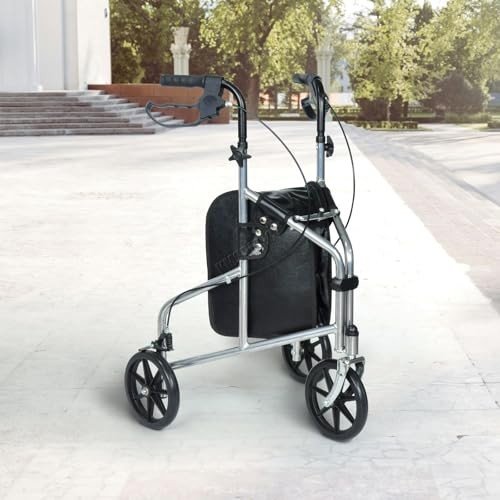disabled_scooters_near_me2466
About disabled_scooters_near_me2466
14 Savvy Ways To Spend Leftover Mobility Scooters UK Budget
Navigating the World of Mobility Scooters in the UK
Mobility scooters have actually become a vital tool for many in the United Kingdom, providing a practical and dignified solution for individuals with mobility concerns. These scooters not only enhance the quality of life for their users but also provide a sense of self-reliance and liberty. This extensive guide intends to supply an overview of mobility scooters in the UK, including their benefits, types, purchasing considerations, and maintenance pointers.
Introduction to Mobility Scooters
A mobility scooter is a battery-powered vehicle developed to help individuals with strolling troubles or restricted mobility to move around more easily. Unlike manual wheelchairs, which need considerable physical effort, mobility scooters are easy to run and can be used both indoors and outdoors. They are particularly helpful for older grownups and people with specials needs, enabling them to take a trip longer distances and browse different terrains with ease.

Advantages of Mobility Scooters
-
Independence and Freedom
- Mobility scooters empower users to take a trip individually, minimizing the requirement for assistance from others.
- They can be used for day-to-day activities such as shopping, checking out good friends, or going to gatherings.
-
Cost-efficient
- While there are initial expenses, mobility scooters can be a cost-efficient option to other mobility help, especially gradually.
- Numerous designs are readily available for rent or lease, providing versatility for users with varying needs.
-
Comfort and Safety
- Scooters are developed with ergonomic seats and adjustable features to make sure convenience during long durations of usage.
- Safety features such as lights, horns, and braking systems boost user self-confidence and security.
-
Social Inclusion
- By allowing individuals to get involved in neighborhood activities, mobility scooters promote social addition and minimize feelings of isolation.
-
Health Benefits
- Regular use of a mobility scooter can assist keep physical health by motivating users to remain active and engaged.
Types of Mobility Scooters
Mobility scooters in the UK can be found in different types, each created to accommodate different requirements and choices:
-
Class 2 Scooters (Pavement Scooters)
- Speed: Up to 4 miles per hour
- Usage: Designed for use on pavements and within indoor areas
- Benefits: Compact and lightweight, ideal for brief ranges and everyday errands
-
Class 3 Scooters (Road and Pavement Scooters)
- Speed: Up to 8 miles per hour on roads and 4 miles per hour on pavements
- Usage: Suitable for longer journeys and can be utilized on both roadways and pavements
- Advantages: More robust and capable of handling different surfaces, consisting of rough surface areas and inclines
-
Off-Road Scooters
- Speed: Varies, but generally greater than Class 2 and Class 3 scooters
- Usage: Designed for off-road usage, including parks, trails, and uneven surfaces
- Benefits: Enhanced resilience and traction, perfect for daring users
-
Travel Mobility Scooters
- Speed: Varies, but typically as much as 4 miles per hour
- Use: Portable and easy to dismantle for transportation
- Advantages: Perfect for users who travel regularly and require a portable option
Acquiring Considerations
When buying a mobility scooter, a number of factors ought to be considered to ensure the very best suitable for the user’s requirements:
-
User’s Physical Condition
- Weight Capacity: Ensure the scooter can support the user’s weight.
- Height and Reach: Choose a design that is adjustable to fit the user’s height and reach conveniently.
-
Meant Use
- Indoor/Outdoor: Determine if the scooter will be used mainly inside, outdoors, or both.
- Surface: Consider the kind of terrain the user will navigate, including any hills or rough surfaces.
-
Battery Life and Range
- Battery Type: Lithium-ion batteries are normally more effective and longer-lasting than lead-acid batteries.
- Range: Check the scooter’s range to guarantee it satisfies the user’s everyday travel needs.
-
Safety Features
- Brakes: Look for scooters with reliable braking systems.
- Lights and Horns: Essential for exposure and alerting others.
-
Service Warranty and Customer Support
- Guarantee: Ensure the scooter features a detailed service warranty.
- Customer Support: Choose a reliable producer with good customer care and support.
Maintenance and Safety Tips
Correct upkeep is essential to ensure the durability and security of a mobility scooter:
-
Regular Battery Checks
- Charging: Always keep the battery charged to prevent deep discharge.
- Cleaning: Keep the battery compartment tidy and free from dirt and moisture.
-
Tire Maintenance
- Inflation: Regularly check and maintain correct tire pressure.
- Inspection: Inspect tires for wear and damage, replacing them as needed.
-
Tidy and Lubricate
- Cleaning: Wipe down the scooter frequently to keep it free from dirt and gunk.
- Lubrication: Lubricate moving parts to prevent rust and guarantee smooth operation.
-
Security Checks
- Brakes: Test the brakes frequently to guarantee they are operating correctly.
- Lights and Horns: Check that all security functions are functional.
-
Follow Manufacturer Guidelines
- Manual: Refer to the user manual for specific maintenance instructions.
- Service: Schedule routine service contact a certified professional.
Frequently Asked Questions (FAQs)
-
Can anyone utilize a mobility scooter?
- No, only individuals with a medical need or disability are eligible to utilize a mobility scooter on public roadways and pavements in the UK. Nevertheless, they can be utilized by anyone on personal property.
-
Do I need a license to drive a mobility scooter?
- No, a license is not needed to utilize a Class 2 or Class 3 mobility scooter. Nevertheless, users must be over 14 years old and have a real requirement for the scooter due to a disability or medical condition.
-
How quick can a mobility scooter go?
- Class 2 scooters have an optimal speed of 4 mph, while Class 3 scooters can reach up to 8 mph on roads and 4 mph on pavements.
-
Can I take a mobility scooter on public transport?
- Some public transportation, such as trains and buses, may allow mobility scooters, however it depends on the particular service and the size of the scooter. It’s best to consult the transport service provider ahead of time.
-
What is the life-span of a mobility scooter?
- With correct maintenance, a mobility scooter can last a number of years, normally in between 5 and 10 years.
-
Can I get financial assistance to buy a mobility scooter?
- Yes, monetary support might be offered through the Disabled Facilities Grant (DFG), local authorities, or charitable companies. Furthermore, some insurers might cover part of the cost.
Mobility scooters are a valuable aid for individuals with mobility issues in the UK, providing a variety of gain from increased self-reliance to improved social participation. By considering the user’s requirements, the designated use, and the scooter’s functions, one can choose the right model to enhance their quality of life. Routine upkeep and adherence to safety guidelines are necessary to ensure the scooter remains a trustworthy and safe mode of transport. For those who certify, financial assistance might be offered to make the purchase more inexpensive. Whether for daily usage or periodic getaways, a mobility scooter can considerably enhance the user’s ability to navigate the world with confidence and ease.
Extra Resources
- Mobility Aids UK: A comprehensive directory site of mobility aids and scooters.
- NHS Choices: Information on mobility help and monetary assistance.
- Disability Living Allowance (DLA): Guidance on requesting financial assistance for disability-related expenditures.
By exploring these resources and considering the points laid out in this guide, individuals can make an informed decision about purchasing and utilizing a mobility scooter in the UK.
No listing found.
